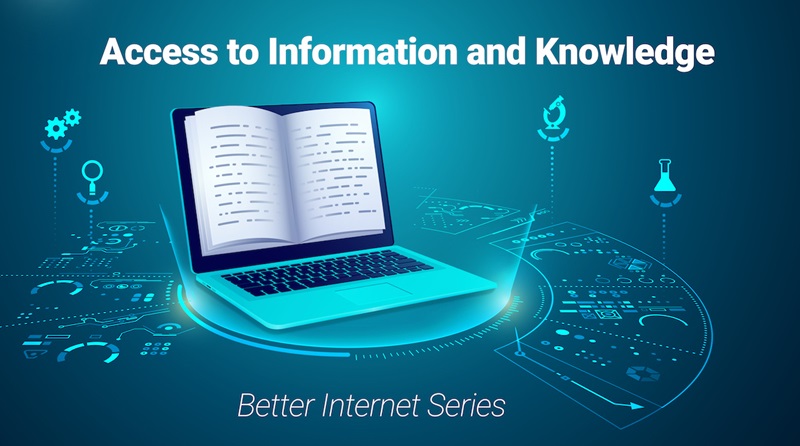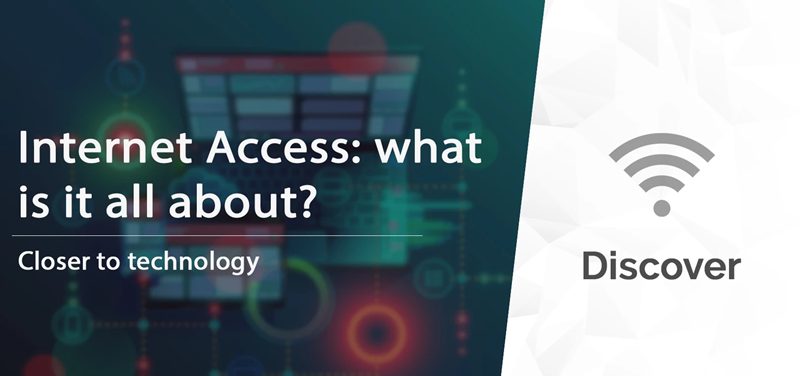Internet access refers to the ability of individuals or organizations to connect to the internet using computers, mobile devices, or other network devices. This connection can be facilitated through a variety of means such as broadband, satellite, dial-up, or wireless networks. Internet access is not just about connectivity but also involves the speed and quality of that connection. Greater bandwidth allows for faster data transfer, enhancing the user’s ability to download and upload information, stream videos, play online games, and partake in other data-intensive activities. The availability and quality of internet access can significantly impact several aspects of modern life including education, commerce, communication, and information dissemination.
The term “Internet Access” also encompasses the concept of digital inclusion, which is about ensuring everyone has equal opportunities to access and use the internet. This is crucial because the internet has become an indispensable resource for information, communication, and economic opportunities. However, not everyone has equal access to the internet. Factors such as geographical location, socio-economic status, and digital literacy can contribute to the digital divide. This unequal access to the internet can lead to significant disparities in opportunities and resource allocation.
Moreover, internet access also includes the user’s ability to engage with and navigate through the digital world. This includes being able to use various online platforms, understand online etiquette, and safeguard one’s privacy and security. The ability to effectively use the internet is often referred to as digital literacy.
Internet Service Providers (ISPs) play a crucial role in internet access. ISPs are companies that provide individuals and businesses with the services needed to access and use the internet. They offer a variety of plans, differing in speed, data limits, and cost, catering to the varied needs of users. The performance, reliability, and affordability of these services can significantly impact the quality of internet access.
The evolution of technology has significantly improved internet access over the years. From the early days of dial-up connections, we have moved to broadband and fiber-optic networks, offering superior speed and reliability. The advent of mobile internet has further revolutionized internet access, enabling people to connect to the internet on the go. Wireless technologies like Wi-Fi and 4G/5G networks have made it possible to access the internet from virtually anywhere, making it an integral part of our daily lives.
In conclusion, understanding the term “Internet Access” involves more than just recognizing the ability to connect to the internet. It’s about understanding the factors that facilitate this connection, the quality and speed of the connection, the role of ISPs, the concept of digital inclusion, and the importance of digital literacy. In an increasingly digital world, internet access is a critical factor that influences education, communication, commerce, and information dissemination, among other areas. Therefore, ensuring equitable and high-quality internet access is a crucial aspect of modern society.

Definition and Scope of Internet Access
Internet access refers to the ability of individuals or organizations to connect to the Internet using computers, mobile devices, or other access points. This connection can be facilitated through different types of technology, such as satellite, cable, wireless, or even fiber optic networks. The scope of Internet access is vast, encompassing various aspects like the speed of connection, the extent of accessibility, and the quality of the connection.
The speed of Internet access can range from low-speed dial-up connections to high-speed broadband connections. Accessibility, on the other hand, denotes the ability of individuals in different locations and circumstances to access the Internet. This can be affected by several factors, including geographical location, infrastructure availability, and financial capacity. In terms of quality, Internet access can be reliable and fast, providing a seamless user experience, or it can be slow and inconsistent, leading to a frustrating user experience.
The scope of Internet access also includes the concept of net neutrality, which argues that all Internet traffic should be treated equally, without any discrimination or preference given to certain types of content, applications, or websites. The issue of digital divide also falls within the scope of Internet access, referring to the gap between individuals who have access to the Internet and those who do not, often due to reasons such as socio-economic status, geographical location, age, or disability.
Furthermore, the scope of Internet access extends to the policies and regulations set by governments and Internet Service Providers (ISPs) regarding access to certain content or websites. This can range from the unrestricted access provided by some countries and ISPs, to the strict control and censorship exercised by others.
In conclusion, the definition and scope of Internet access cover a wide array of factors, from the technical aspects of connection speed and quality, to the broader social and political issues of accessibility, net neutrality, and content control.
Definition and Scope of Internet Access
Internet access can be defined as the ability to connect to the worldwide digital network known as the internet, which allows users to exchange information, data, and communication. It is typically provided by Internet Service Providers (ISPs) using various technologies such as broadband, Wi-Fi, satellite, and fiber optics.
The scope of internet access is extensive and continuously evolving, touching almost every aspect of modern life. It influences areas such as education, business, healthcare, entertainment, social interactions, and much more. These sectors leverage the internet to enhance their functions, reach a broader audience, and improve overall efficiency. In education, for example, internet access has led to the development of e-learning platforms, which provide learners with a platform to access educational materials from anywhere around the globe.
In the business world, the internet has facilitated the growth of e-commerce and digital marketing. Companies can now reach customers globally, sell their products online, and use digital platforms for advertising. In healthcare, internet access has resulted in telemedicine, where patients can consult with doctors virtually without the need for physical appointments.
The entertainment industry has also greatly benefited from internet access, with platforms like Netflix and Spotify providing streaming services for movies, series, and music. Furthermore, social interactions have been revolutionized by social media platforms, which rely heavily on internet access.
However, the scope of internet access is not without challenges. Issues such as digital divide, privacy concerns, and cybersecurity threats are pressing matters that need attention and solutions. Digital divide refers to the gap between individuals who have access to the internet and those who do not, while privacy concerns and cybersecurity threats involve the unauthorized access and misuse of personal information online. Despite these challenges, the advantages of internet access far outweigh the disadvantages, and efforts are being made to address these issues to fully leverage the potential of the internet.

How Internet Access is Provided
Internet access is primarily provided through several means: DSL (Digital Subscriber Line), cable, fiber-optic, satellite, and cellular data networks. DSL and cable connections are the most common and are typically offered by telephone and cable television service providers, respectively. These types of connections utilize the existing infrastructure of telephone and cable TV lines to transmit internet data to residential and commercial buildings. Fiber-optic connections, on the other hand, are becoming increasingly popular due to their superior speed and reliability. This type of connection uses pulses of light sent along thin strands of glass or plastic to transmit data at incredibly high speeds.
Satellite internet access is another option, particularly beneficial for those in remote or rural areas where traditional broadband services may not be available. In this setup, a satellite dish is used to send and receive data from a satellite orbiting the Earth. Lastly, cellular data networks also provide internet access, predominantly for mobile devices. Depending on the generation of network technology (3G, 4G, 5G), the speed and reliability of these connections can vary significantly.
In addition to these, some regions also have access to fixed wireless internet, which uses radio signals instead of cables to provide internet access. However, this type of connection typically requires a clear line of sight between the transmitter and receiver. To gain access to the internet, users typically need to subscribe to a service plan with an Internet Service Provider (ISP). The ISP is responsible for maintaining the infrastructure that allows for internet connectivity and for regulating the speed and amount of data a customer can use, usually specified in the service plan. Public Wi-Fi networks also offer internet access, often in specific locations such as coffee shops or libraries. These networks are usually free or require a small fee to use.
Factors Affecting Internet Access Quality
Internet access quality can be influenced by a myriad of factors, all with varying degrees of impact. One of the most significant factors is the type of connection being used. For instance, wired connections like Fiber Optic and DSL generally provide a more reliable and faster service compared to wireless connections such as Wi-Fi or mobile data. Additionally, the geographical location can also play a significant role. Rural areas may experience slower speeds and less reliable connections as compared to urban regions due to limited infrastructure.
Furthermore, the number of users sharing the same internet connection can significantly degrade the quality of the service. This is because the available bandwidth is divided among all the users, which may cause a slowdown during peak usage times. In the same vein, the type and number of devices connected to the same network can also affect the quality of internet access. Certain devices, especially older ones, may not be capable of handling high-speed connections thus reducing the overall performance of the network.
Technical issues such as outdated hardware or software, computer viruses, and poor router configuration can also hinder optimal internet performance. Additionally, the quality of the equipment, including cables, routers, and modems, can significantly affect the speed and reliability of the connection. Service provider policies, like data caps or throttling, can also influence the overall quality of the internet access.
Weather conditions can also impact internet access quality. Severe weather conditions such as heavy rain, snow, or high winds can interfere with the signal, particularly in the case of satellite internet connections. Lastly, the maintenance and upgrade practices of the internet service provider can also affect the quality of internet access. Regular maintenance and timely upgrades can ensure a smooth and high-quality internet connection. Therefore, a multitude of factors, ranging from physical to technical and environmental, can influence the quality of internet access.

The Importance of Internet Access in the Modern World
In today’s rapidly evolving world, internet access has become an essential component of our daily lives. It is the cornerstone of the contemporary, globalized society. It’s crucial not just for entertainment and socializing, but also for education, business, and access to vital information. It is through the internet that a student in a remote village can access the same wealth of knowledge as a student in a bustling city.
Businesses, irrespective of their size or location, can reach out to a global audience, breaking the barriers of geographical constraints. Information, once the privilege of a select few, is now at everyone’s fingertips, leveling the field in unprecedented ways. Moreover, in times of crisis, the internet serves as a critical lifeline, enabling communication, coordination, and the dissemination of vital alerts. With the onset of the pandemic, the internet has played a pivotal role in the continuity of education, work, and healthcare, underscoring its importance in our lives more than ever.
Yet, despite its significance, it is important to note that a considerable portion of the global population still lacks reliable internet access. This digital divide further exacerbates socio-economic disparities, as those without access are left behind in the race for progress and opportunity. Therefore, ensuring universal and affordable internet access should be a priority, not just for governments, but for all stakeholders. The internet is more than just a tool or a service; it is a necessity, a fundamental right in the 21st century, and the key to unlocking the immense potential of human capability.
